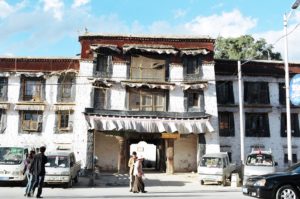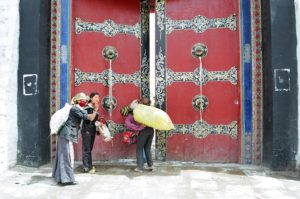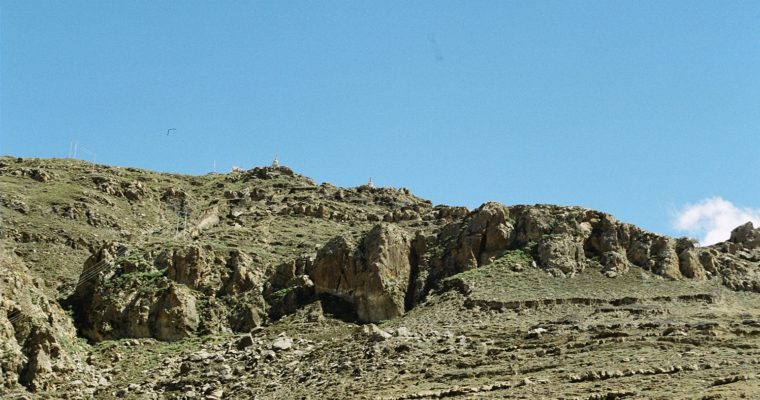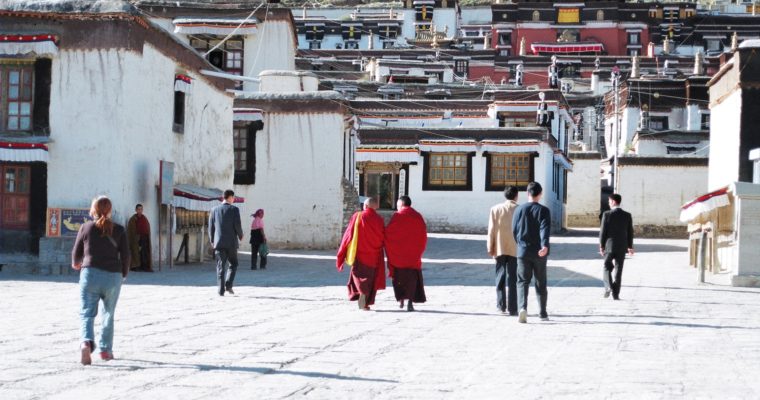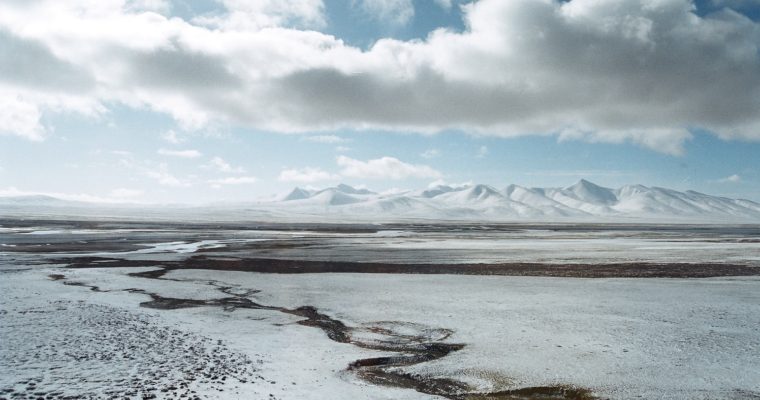When we arrived at Lhasa, we were told not to shower or exercise on our first day. We did both, as who could pass up the first chance of showering after two days without it on the train? The walk up four floors to our hotel rooms was enough of a hike for all of us, and we rested half-way on second floor before we made it onto the fourth. We panted our way up that staircase.
Modernization has swept through Lhasa, undressing much of its mystery and prehistoric beauty. Yet much of what I imagined Lhasa to be still remains, its people being deeply religious. The forever-crowded temples speak to a vibrant culture of Buddha worship. Yak buttered candles are lit and re-lit throughout the day in these temples, filling the already-stuffy inner chamers of the temples with a pungent mixture of moist and raw, gamey smell. Monks stroll along the streets of Lhasa, walking in a pace of grace and authority.
The outskirts of the city spells a delicious range of high mountains surrounding a petite layer of buildings, styled just like any other Chinese city built in the 1980s. Yet the many people dressed in traditional Tibetan attire opens one’s heart to a culture distinctive in many ways from the rest of China. Their facial features bear resemblance to the Indians and the Nepalese, rather than the Han Chinese. They are called “Zang min,” the Tibetan people.
On the streets of Lhasa I was absorbed in this culture of eastern religion and appreciate the dotted modernity along Beijing Road. I remember Lhasa, the soul of Tibet, for its exceptional spiritual respite. It is a place of intrigue–picturesque, lively, yet also content.
If only I can record the smell of Lhasa too, of cheap gasoline, car exhaust, Indian incense and raw beef.
